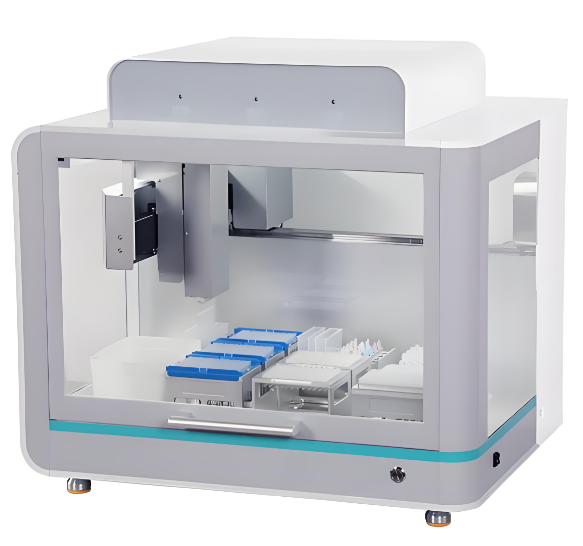-
article · 2025Year59Moon26Day
新手如何快速上手 Opentrons Flex 工作站?
Read More -
article · 2025Year49Moon25Day
Flex工作站模块化设计有什么好处?
Read More -
article · 2025Year27Moon24Day
Opentrons Flex 如何简化蛋白质样品处理流程?
Read More


NGS automated library construction refers to the use of automated technology and equipment to carry out a high-throughput, high-efficiency, and high-precision library construction process for DNA or RNA samples. This process covers many aspects from sample processing, DNA/RNA extraction, library construction to quality control, etc., aiming to reduce manual operations and improve experimental efficiency and accuracy.

1. Sample preparation and DNA/RNA extraction
1. Sample collection: Collect target samples, such as cells, tissues, blood, etc., to ensure the integrity and representativeness of the samples.
2. Sample processing: Select the appropriate processing method according to the sample type, such as cell lysis, tissue grinding, etc., to release DNA or RNA.
3. DNA/RNA extraction: Use appropriate extraction methods (such as phenol-chloroform method, magnetic bead method, column method, etc.) to purify high-quality DNA or RNA from the sample.
2. Library construction
Library construction is the core step of automated NGS library construction, which usually includes the following sub-steps:
1. DNA/RNA fragmentation:
1>Cut DNA or RNA molecules into smaller fragments for subsequent sequencing reactions. Fragmentation can be achieved by physical methods (such as sonication) or chemical methods.
2>Fragment size is usually between 100-1000 base pairs, depending on the sequencing platform and experimental needs.
2. End repair and A-tail addition:
1>Perform end repair on fragmented DNA or RNA to remove end damage and add phosphate groups and 3’ end A tails. These repair steps facilitate subsequent adapter ligation and library amplification.
3. Connect the adapter:
1>Connect the repaired DNA or RNA fragment to a specific adapter (also called an adapter). Aptamers are DNA or RNA fragments containing specific sequences that are used in subsequent PCR amplification and sequencing reactions.
2>In the process of automated library construction, this step is usually achieved through automated pipetting and ligation reactions.
4. Library amplification:
1>Amplify the DNA or RNA fragments connected to the aptamer through PCR amplification to a sufficient amount to form a library that can be used for sequencing.
2> During the amplification process, primers with adapter sequences are used for specific amplification.
3. Library quality control
Library quality control is an important step to ensure library quality and reliability of sequencing results. Commonly used library quality control methods include:
1. Quantitative PCR: used to detect the concentration and amplification efficiency of the library.
2. Polyacrylamide gel electrophoresis: used to evaluate the size distribution of library fragments.
3. Mass spectrometry analysis: used to further verify the quality and purity of the library.
4. Function:
1. Automated operation: Automate sample processing, library construction and other steps through automated equipment to reduce manual intervention.
2. Improve efficiency: The automated process shortens the experimental cycle and improves experimental efficiency.
3. Reduce errors: Reduce errors caused by human operations and improve the accuracy and stability of experimental results.
The experienced service team and strong production support team provide customers with worry-free order services.

简体中文

繁體中文

English

日本語

한국인